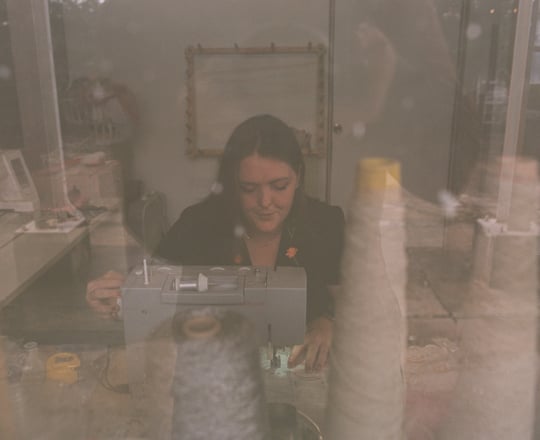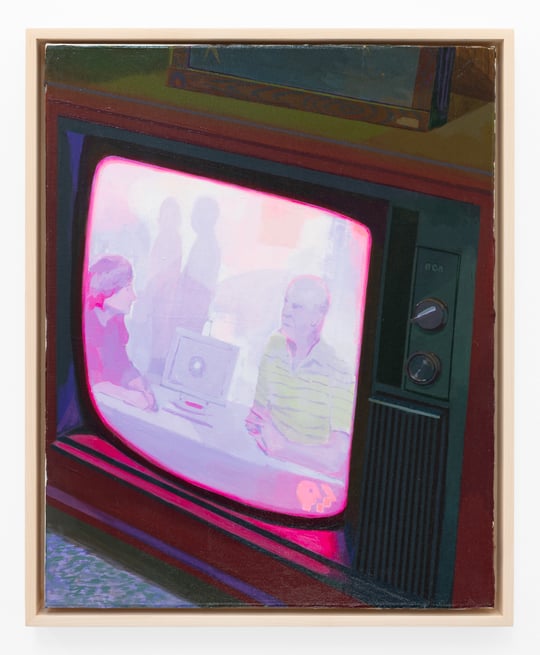13 1/2 x 10 inches, cut paper collage, courtesy the artist and Barbara Archer Gallery.
Dayna Thacker’s current exhibit, Theories of Everything, is on display at Barbara Archer Gallery through May 4th. This body of work demonstrates a new approach for Thacker, whose prior collage technique includes reappropriating images, text, photographs, and occasionally original illustrations. The work in Theories of Everything can be placed into three groups: single layer cut paper, double layered cut paper collages and large cut paper collages where up to 70 pages have been layered, assembled and adorned with hand cut patterns.
Thacker’s use of geometric patterns taken from Roman, Arab and Muslim sources, and the philosophy to which they are associated, reflect the name of the exhibit. As Thacker explains it:
“To the Muslim artists of old, the harmonies and proportions achieved in these patterns are the relationships and ratios that make up the universe. They can be applied to planets, stars, the human body, a tree, worms in the soil—everything.”
These are large and dense concepts for Thacker to tackle, but her pieces are not heavy handed or pedagogic. Instead, they read as well-executed visual manifestations of the invisible connectedness in the universe.
In the single layer modified images, the patterns blend so seamlessly with the photographs that it almost seems like the artist and the (original) photographer are collaborating in real time. This is obviously not the case, but instead of “re-contextualizing the image,” as she states, Thacker’s intention is to let the original meaning of the photograph be felt by the viewer. In fact, to take that thought one step further, Thacker says, “my purpose is to reinforce and amplify their original meaning.”
8 x 8 inches, cut paper collage, courtesy the artist and Barbara Archer Gallery.
Not only is this a new technique for Thacker, but it is a rarity in the medium of collage as a whole. The effectiveness of this approach depends not only on the artist’s impressive cuts, but on the photographs as well. In Theories of Everything, there are a variety of colors, textures and sceneries utilized, all of which have been carefully chosen and curated by Thacker—who actually used her own photographs for five of the pieces. These specific works differ from and were crucial to Thacker due to their “shallow-perspectives, textural qualities, and close-ups,” as opposed to the appropriated imagery with more sweeping landscape views.
The large cut paper collages steal the show and completely exemplify Thacker’s skill as well as the exhibition’s conceptual message. The smallest of these four works measures 39 x 42 inches, and each of them are comprised of many nature scenes from various sources. After piecing all of the sheets together—70 pages were used in Swift and Tilting—Thacker cut the patterns using a template as her guide.
78 x 90 inches, cut paper collage, courtesy the artist and Barbara Archer Gallery.
Most successfully, these large-scale pieces bring the viewer in for a close view and allow contemplation on the complex patterns that literally connect them, the meditative intent of the patterns thus takes effect.




